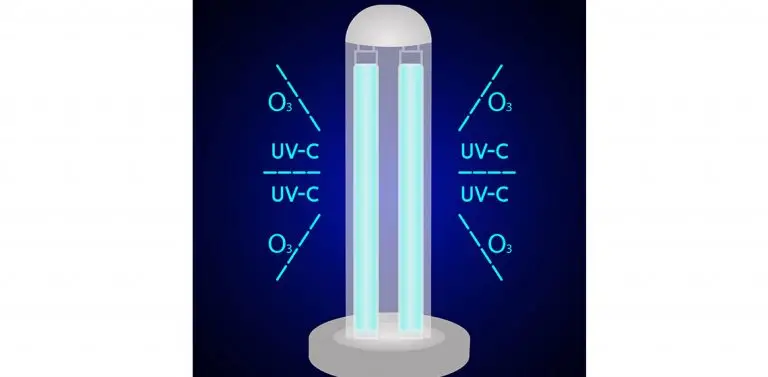
In the realm of construction and building design, the emphasis on health and well-being has taken center stage. As indoor air quality gains importance, innovative solutions like UV-C sanitizing light services have emerged to tackle this challenge. Harnessing the power of ultraviolet light, these services offer a proactive approach to enhancing indoor air quality. If you’re involved in construction projects, understanding how UV-C sanitizing light works and its benefits can revolutionize the way you approach building design and occupant health.
The Science Behind UV-C Sanitizing Light
UV-C sanitizing light is a technology that utilizes ultraviolet or UV light in the short wavelength range to effectively eliminate microorganisms, including bacteria, viruses, and molds. UV-C light damages the DNA and RNA of these organisms, preventing them from replicating and rendering them inactive. This technology has been used for years in medical settings to sterilize equipment and disinfect surfaces, and its potential in improving indoor air quality is now being recognized in the construction industry.
Enhanced Indoor Air Quality
Indoor air quality is a critical factor in maintaining a healthy and productive environment. Traditional ventilation systems can circulate airborne contaminants, contributing to respiratory issues and allergies among building occupants. UV-C sanitizing light services offer a proactive solution by targeting these contaminants at the source. By installing UV-C light fixtures within the HVAC system, the technology can neutralize bacteria, viruses, and mold spores as they pass through the air, resulting in cleaner, healthier air being circulated throughout the building.
Reduction in Pathogens And Allergens
One of the key benefits of UV-C sanitizing light services is the significant reduction in pathogens and allergens within indoor spaces. Bacteria and viruses that can cause illnesses are effectively neutralized, reducing the risk of infections among building occupants. Additionally, mold spores, a common allergen, are eliminated, leading to improved comfort for those prone to allergies. By creating an environment with fewer pathogens and allergens, the overall health and well-being of occupants are positively impacted.
Minimized Spread of Illnesses
In shared spaces such as offices, schools, and healthcare facilities, the spread of illnesses can be a major concern. Airborne viruses can quickly move from one person to another, leading to outbreaks. UV-C sanitizing light services act as a powerful tool in minimizing this spread. By neutralizing viruses and bacteria in the air, the technology reduces the concentration of harmful microorganisms, making it less likely for illnesses to be transmitted within the indoor environment.
Eco-Friendly Solution
UV-C sanitizing light services are also an eco-friendly solution for indoor air quality improvement. Unlike chemical disinfectants that can release harmful byproducts into the environment, UV-C light technology is chemical-free and does not produce residual waste. It relies solely on light to target and neutralize microorganisms, making it a sustainable option for maintaining a healthy indoor environment.
Maintenance and Longevity
The maintenance of UV-C sanitizing light systems is relatively simple. Regular inspections and cleaning ensure that the fixtures are functioning optimally. Additionally, these systems have a long lifespan, requiring minimal replacements or repairs. This makes UV-C light technology a cost-effective investment in the long run, as it contributes to improved indoor air quality without recurring expenses associated with chemical disinfection methods.
Integration in Construction Projects
The integration of UV-C sanitizing light services in construction projects can occur at different stages. For new builds, architects, and engineers can design HVAC systems with UV-C light fixtures in mind, ensuring that the technology is seamlessly incorporated from the start. In existing buildings, retrofitting HVAC systems with UV-C light fixtures is also feasible, allowing for the benefits of improved indoor air quality to be realized without the need for extensive renovations.
Collaborative Approach
The successful implementation of UV-C sanitizing light services requires collaboration between various stakeholders, including architects, engineers, HVAC specialists, and facility managers. Architects can work with engineers to design HVAC systems that accommodate UV-C fixtures, ensuring optimal placement for maximum efficiency. HVAC specialists can then install the fixtures and provide guidance on maintenance. Facility managers play a crucial role in regular inspections and upkeep to ensure the technology continues to deliver its benefits.
Occupant Well-Being and Productivity
Healthy occupants are more likely to be productive and satisfied within indoor spaces. Improved indoor air quality achieved through UV-C sanitizing light services can lead to fewer sick days and increased overall well-being. In environments like offices and educational institutions, where occupants spend a significant amount of time, the positive impact on productivity and comfort can be substantial. Construction professionals who prioritize occupant health and comfort contribute to creating spaces that support well-being and success.
In the construction industry, the emphasis on indoor air quality has led to innovative solutions like UV-C sanitizing light services that offer tangible benefits. By harnessing the power of UV-C light to neutralize pathogens, allergens, and contaminants within HVAC systems, construction professionals can create healthier indoor environments for building occupants.
This technology not only improves indoor air quality but also contributes to overall occupant well-being, productivity, and the sustainability of construction projects. As the importance of health-conscious design continues to grow, UV-C sanitizing light services provide a forward-thinking approach to construction that prioritizes the health and comfort of those who inhabit the spaces we build.

